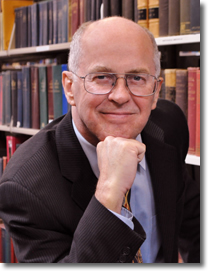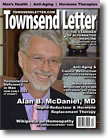Page 1, 2, 3
Other studies have revealed the transdifferentiation of bone marrow derived stem cells into insulin-producing cells in animal models of diabetes (streptozotocin-induced diabetic mice), differentiation of engrafted bone marrow-derived mesenchymal stem cells into specific and distinct lung cell phenotypes in animals with bleomycin-induced pulmonary damage, and much more.20,21
Many skeptics have pointed out that no matter how many millions of adult stem cells are infused into patients, the numbers that actually engraft and differentiate or transdifferentiate in target tissues or organs are too low to have a major impact on whatever damage or disease is present. This might be true if healing and restoration depended on the differentiated or transdifferentiated cells alone. However, both I and many others working in stem cell medicine contend that the infused cells, both those that engraft and those that do not and are eventually cleared or die off, facilitate healing by other means. This brings me to the paracrine and other effects of substances secreted by these cells, a mechanism that in my opinion probably accounts in large part for the remediative, healing, and restorative impact seen in the clinic.
During the past decade or so, researchers have identified numerous growth factors (plus a chemokine) that are expressed by bone marrow stem cells, typically upon engraftment. These are the principle ones:
Platelet-derived growth factor: PDGF promotes tissue remodeling and cellular differentiation, participates in inductive events involved in patterning and morphogenesis, and promotes angiogenesis.
Vascular endothelial growth factor alpha and vascular endothelial growth factor beta: VEGF-alpha and VEGF-beta both stimulate vasculogenesis and angiogenesis. VEGF also stimulates neurogenesis in vitro and in vivo.22
Transforming growth factors (TGFs) TGFA, TGFB1, TGFB2 and TGFB3: TGFs are a family of structurally related proteins that control proliferation, differentiation and other functions in many cell types
Bone morphogenetic proteins (BMPs) 1, 2, 3, 4, 6, 7, 8B, R1A, and PR2: These growth factors have various effects, most being integral to cartilage and bone development plus fracture repair. One, BMP7, is involved in renal development and repair.
Nerve Growth Factor (bone marrow mesenchymal stem cells): NGF is a small protein that is important for the differentiation, growth, maintenance, and survival of sensory and sympathetic neurons. It also functions as a signaling molecule.
Source for growth factors listed above: "Growth factors and gene expression of stem cells: bone marrow compared with peripheral blood."23
Hepatocyte growth factor (Bone marrow mesenchymal stem cells): HGF is a paracrine cellular growth, motility and morphogenic factor that targets and acts primarily upon epithelial cells, endothelial cells and also hematopoietic progenitor cells. It has been shown to have a major role in wound healing and adult organ regeneration.24
Insulin-like growth factor-1: IGF-1 binds to the insulin-like growth factor 1 receptor present on many cell types in many tissues.25 It is one of the most potent natural activators of the AKT signaling pathway, a stimulator of cell growth and proliferation, and a potent inhibitor of programmed cell death. In addition, IGF-1 is a primary mediator of the effects of growth hormone (GH).
Stromal-derived factor-1: SDF-1 promotes hematopoietic cell mobilization and migration, among other things.26
In addition, adult stem cells have also been found to express various chemokines, bioactive lipids (such as sphingosine-1-phosphate and ceramide-1-phosphate), as well as microRNA, also written as miRNA (i.e., small noncoding RNA molecules that act to downregulate gene expression in a variety of ways), and RNA that many researchers think are primary drivers of tissue and organ regeneration by virtue of paracrine signaling.27
Especially exciting are findings showing that activated stem cells secrete microvesicles (MVs) or exosomes, which are small, spherical membrane fragments shed from cell surfaces or that are secreted from the endosomal compartment within cells that inhibit programmed die-off (apoptosis) of cells residing in damaged tissues, as well as stimulate their proliferation and promote vascularization.28 One research group found that these stem cell-generated MVs "contained ribonucleoproteins involved in the intracellular traffic of RNA and selected pattern of microRNAs, suggesting a dynamic regulation of RNA compartmentalization in MVs. The observation that MV-highly expressed miRNAs were transferred to target cells, raises the possibility that the biological effect of stem cells may, at least in part, depend on MV-shuttled microRNAs."29
In conclusion, I have covered a lot of ground in this article. My goal in this was to use my path into the world of stem cell medicine along with findings from the published science to illustrate the fact that adult stem cells, especially those found in bone marrow, are a powerful therapeutic modality. Whether they work their healing and restorative "magic" because they engraft and transdifferentiate or differentiate into specific cell types, or secrete paracrine and other factors, or both, the fact is that they get the job done. They did this for Edward Donnall Thomas and his patients, they have for me and my patients, and they can do this for doctors reading this and their patients.
Notes .pdf

This article is a revised version of text from a presentation that Dr. Steenblock gave at the "Europas größter Ärztekongress für Komplementärmedizin" ("Europe's Largest Medical Conference on Com2plementary Medicine") in November 2012.
© 2015 David A. Steenblock, DO, Inc. All rights reserved.
 David A. Steenblock, MS, DO David A. Steenblock, MS, DO
Steenblock Research Institute
San Clemente, California, US
Dr. David A. Steenblock earned his BS degree from Iowa State University, then an MS in biochemistry and doctor of osteopathy (DO) degree from the College of Osteopathic Medicine and Surgery in Des Moines, Iowa. His postdoctoral training included three years at Case Western Reserve University, one year at the Oregon Health & Sciences University, and a clinical rotating internship at Providence Hospital in Seattle, Washington. During the late 1970s, he founded the first integrative medicine clinic west of the Mississippi River. In the years since he has done pioneering clinical work including the use of hyperbaric oxygen therapy to treat stroke (starting in 1989), umbilical cord stem cell therapy (Mexico from 2003), and, since 2005, stem cell rich bone marrow aspirate concentrate (BMAC). In October 2015 he was awarded the Academy of Comprehensive Integrative Medicine's (ACIM) "Lifetime Achievement Award" at its NeuroRegeneration Conference (Orlando, Florida) in recognition of his more than 40 years of contributions "to the betterment of mankind and the advancement of integrative medicine."
While at the ACIM conference, Dr. Steenblock gave a presentation on amyotrophic lateral sclerosis (ALS), or "Lou Gehrig's disease," that included data and insights gleaned from an observational study he did of 54 sporadic ALS patients whom he treated over a 4-year period (2011–2015). He shared evidence he found in the majority (52 of 54 sALS patients) that links spinal injury and subsequent reinjury to breaches in the blood–cerebrospinal barrier, breaches which then admit specific neurotoxic compounds, activated and damaged immune cells that secrete misfolded SOD1, as well as other cell and nerve cell toxic players (some of which are selectively lethal to motor neurons). He also discussed his use of bone marrow stem cells and other means to repair these breaches, offset and reverse the damage, and counter the ALS disease process.The spinal injuries/reinjuries and the symptoms and pathological damage that Dr. Steenblock discovered provide both a unique risk factor and biomarker for sALS. If validated by subsequent research, this is something that physicians and researchers can use to better diagnose sALS.
A paper concerning this has been prepared for submission to a top-tier peer-reviewed journal.
Page 1, 2, 3
|
![]()
![]()
![]()





 David A. Steenblock, MS, DO
David A. Steenblock, MS, DO